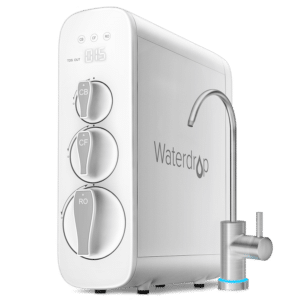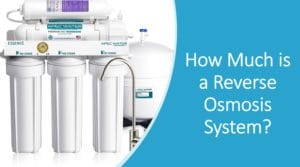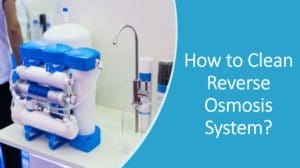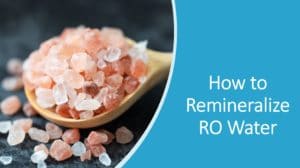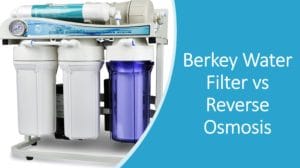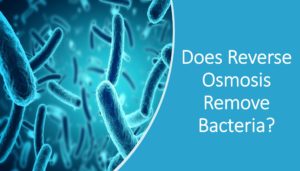Reverse osmosis systems are an increasingly popular component for households, but what do they do? In this guide, you’ll learn how these systems function, what their components are, how they compare to water softeners, and when it makes sense to use them.
What is Reverse Osmosis?
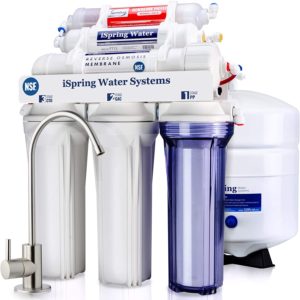
Reverse osmosis is the process of pushing water through a semipermeable membrane, which is a structure that prevents molecules or atoms larger than a specific size from moving through them. By changing the size of the holes, you can functionally determine which molecules can pass through the membrane and which ones can’t.
The practical result of this is that reverse osmosis helps purify water by removing pathogens, salts, minerals, and other contaminants. The water that still has contaminants in it goes elsewhere, while the water with a low concentration of salts and other issues moves into your pipes.
The purified reverse osmosis water is often known as “permeate water” because it has permeated through the membrane during the filtration process.
What are the Benefits of Reverse Osmosis Systems?
Reverse osmosis systems offer several benefits for households, and even the Environmental Protection Agency agrees that they are effective in eliminating disease-causing organisms and most chemical contaminants from water.
Reverse osmosis is also generally safer than bottled water, which is the only form of drinking water many people have access to. Most regions do not specifically regulate bottled water, so it’s impossible to tell how pure it is. Further, the plastic containers may leech contaminants into the water over time.
As a secondary benefit, reverse osmosis systems reduce the need for plastic bottles, which is much better for the environment. This is particularly true in households that can’t drink their tap water.
Most countertop reverse osmosis systems can purify water to significantly better levels than regular filters. In fact, it’s a popular choice for the military, where fieldwork or time spent in areas like submarines can make it difficult to access other sources of safe drinking water.
In some ways, reverse osmosis’s effectiveness at removing minerals is also a limit. While you don’t need essential minerals in drinking water as long as you get them into your diet somehow, most people feel that trace amounts of minerals in water give it a better taste.
This is why some manufacturers add remineralization systems to their reverse osmosis filters, which reintroduce molecules like calcium in controlled amounts. These are optional, but you should check for them when buying a reverse osmosis system if you have a preference.
How Does Reverse Osmosis Work?
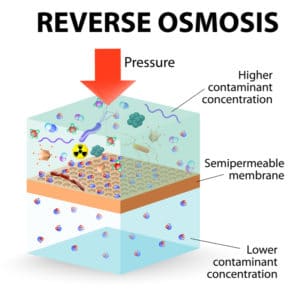
We touched on this earlier, but a proper reverse osmosis water filter works by pushing water through a membrane to remove impurities.
Most reverse osmosis systems do this by using a high-pressure pump, which forces water through the membrane while redirecting anything that doesn’t go through. Efficiency varies by system, but most reverse osmosis systems push somewhere between 15% and 50% of their water through the membrane.
Many people consider the remaining water wasted, although that isn’t a strictly accurate description of the process. Every system that removes contaminants needs to collect and separate those contaminants somehow. In reverse osmosis, this is done through the water that doesn’t go through the filter.
Preventing the water from being truly wasted is as simple as sending the rejected stream to another use, such as watering plants or dishes. Diverting the excess water into the ground without using it for anything else raises costs, while essentially recycling the water helps lower costs.
Some modern systems use several membranes to filter water. This is often done with filters of varying sizes, allowing them to filter out smaller and smaller particles with more efficiency than a single filter allows.
Related: Is Reverse Osmosis Water Good or Bad?
What Are The Basic Components of a Reverse Osmosis System?
Each RO water system has several primary components. The style, design, and necessity of some components may vary by area, but this is what you can expect to see when installing the system.
The information below is specifically for Whole house RO water setup. Commercial and industrial facilities typically have much larger and more complex systems that can filter more water at once.
#1: Water Supply Connector
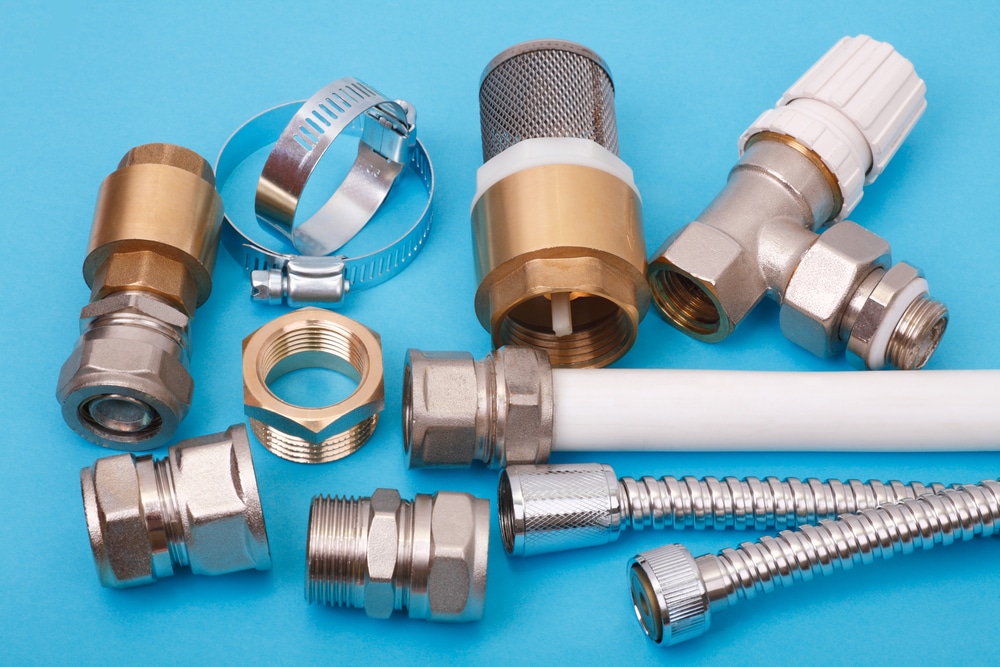
Sometimes known as a feedwater supply adapter, this is the main connection to your household’s cold water supply. You can’t filter anything if you don’t have the water to start with, so a proper connection is the first component of any RO setup.
#2: Pressure Regulator
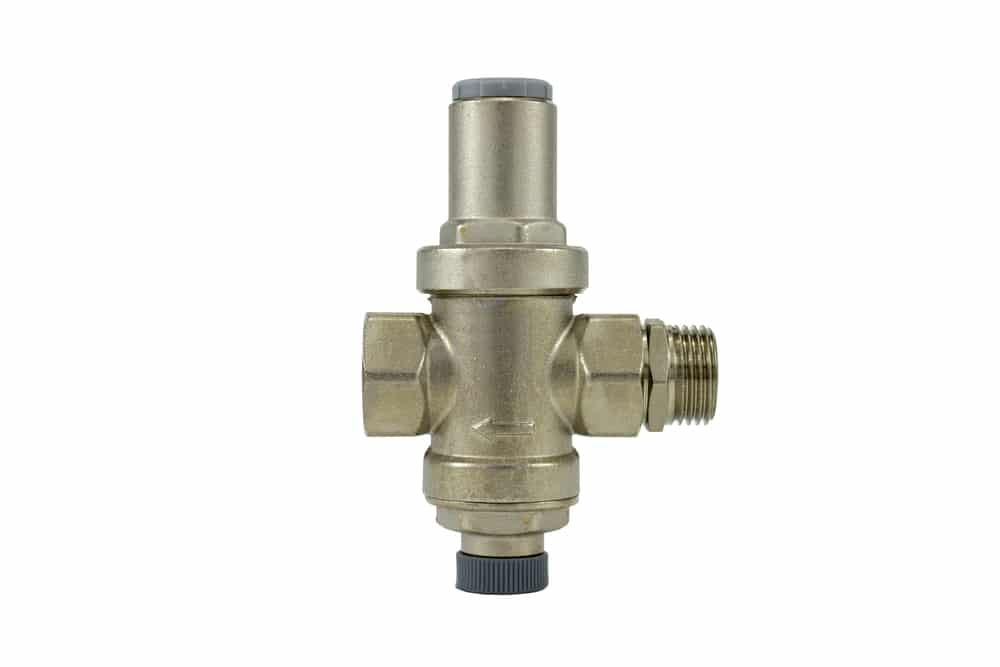
This is mostly optional, depending on the rest of your household’s setup. Pressure regulator valves help protect pre-filter areas from high water pressure and hammering from water movements. Typical households support pressures up to 75 PSI, but you can install parts to make this higher for particularly large or special systems.
#3: Sediment Filter
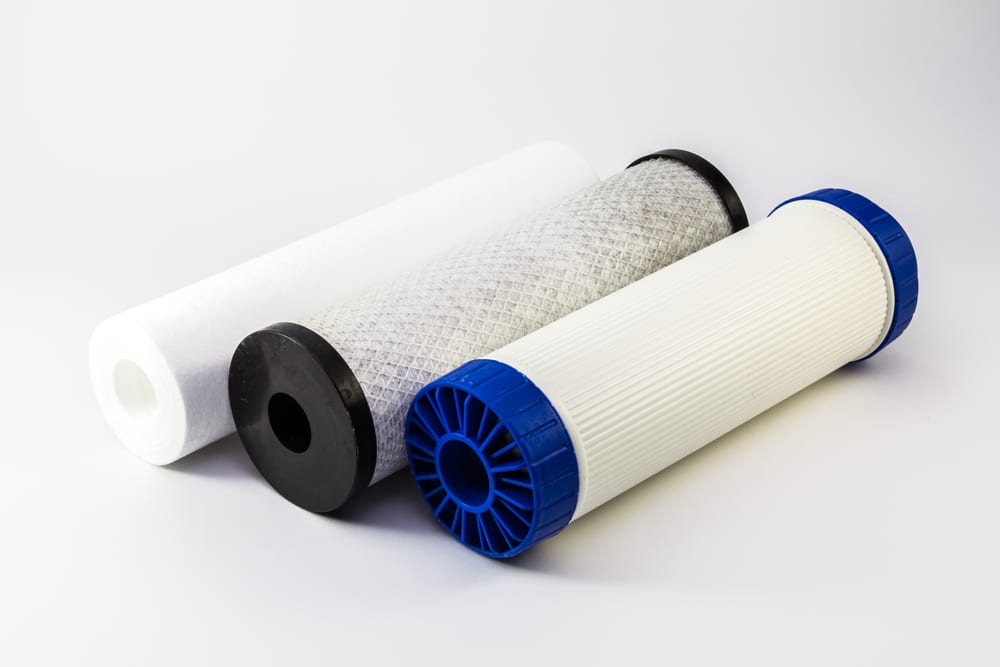
Sediment filters help remove particularly large particles before they can reach the more delicate interior systems. This includes things like grit, sand, iron oxide, and other debris. Some sediment filters also help remove a lot of other debris, but they aren’t the primary filter and you shouldn’t expect them to work as such.
Most sediment filters last 3-6 months under regular use. If your incoming water is already pretty clean, sediment filters may last a lot longer. If you use a lot of water, these filters may wear out faster than usual.
Try to check this component at least once a month to ensure that it’s not damaged yet. Failure here can lead to damage along the (expensive) interior components, so replace it once you see it’s noticeably worn out.
#4: Carbon Filter
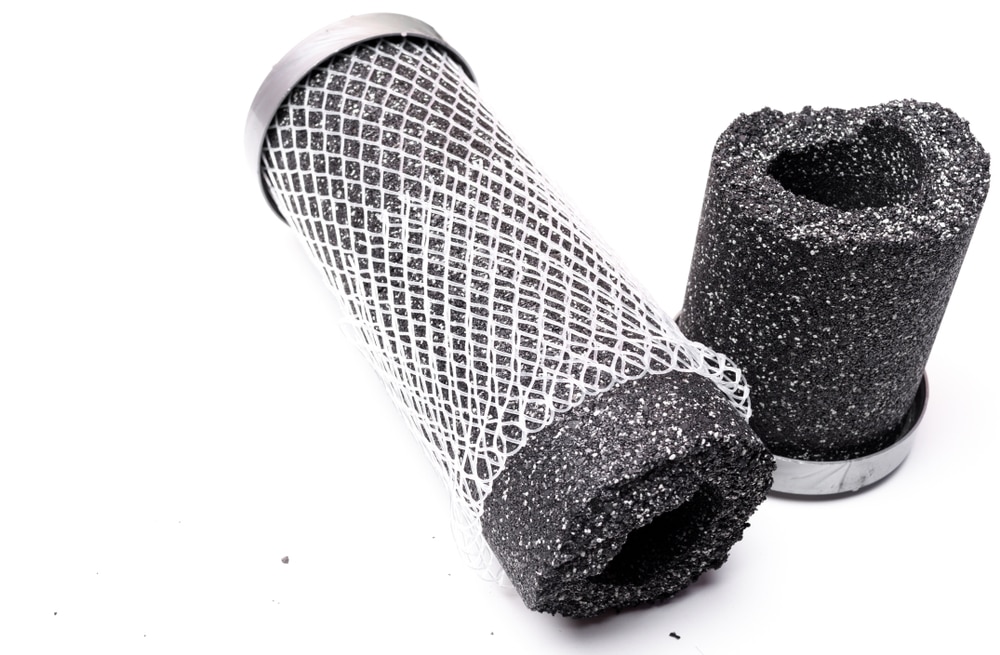
Activated carbon is an extremely popular choice for filtering water and with good reason. It has a truly immense surface area, allowing it to grab and hold many types of molecules and pollutants in water.
Carbon filtering is great for general household water, and especially drinking water, where it forms the basis of many pitcher-based filter systems. While it filters out most substances fairly well, it’s particularly useful in reverse osmosis for getting rid of added cleaning chemicals like chlorine or, in some areas, chloramine.
Chloramine is an increasingly popular choice in some municipalities because it’s a safer chemical, but it also requires spending a lot more time in a carbon filter if you want to get rid of it. This is why you should opt for a large carbon filter instead of a small one.
Your municipality may change over to chloramine at some point if it hasn’t already, so installing a large carbon filter now helps ensure you’ll be ready for that. Besides, large filters tend to last longer, which reduces maintenance requirements.
The best carbon filters clean down to about 0.5 microns, which is about ten times smaller than a good sediment filter. Your water will be fairly clean by the time your water passes through this filter, but not clean enough to count as purified water.
#5: Automatic Shut-Off Valve
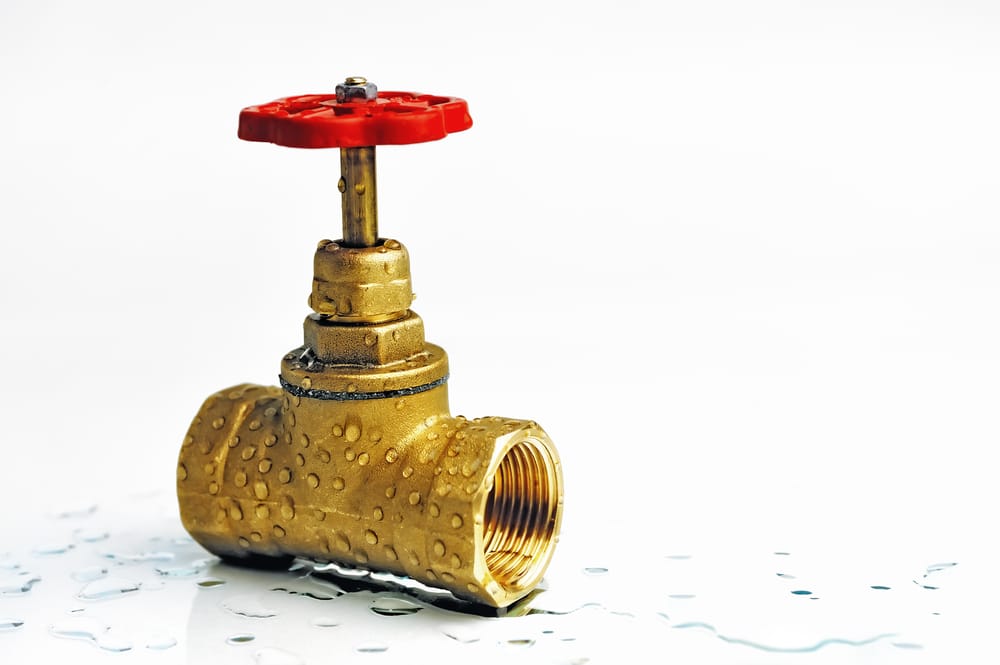
Also known as an ASO valve, this component helps control the flow of water to the reverse osmosis membrane. Its main goal is to help stop the tanks from getting too full or too empty while you’re using them, which also helps minimize the risk of damage to your systems from water pressure constantly going up or down.
ASO valves are entirely manual, so they don’t require any electricity to keep working.
#6: High-Pressure Pump
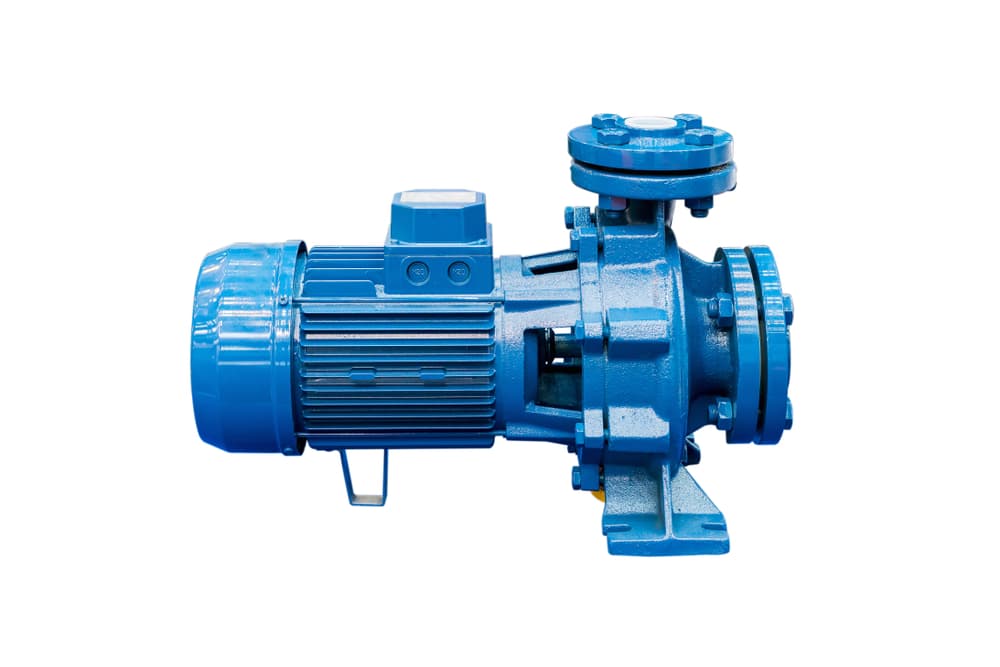
Most reverse osmosis systems have a high-pressure pump to accelerate water flow and help push it through the membrane. Gravity and regular water pressure alone might not be enough to filter water effectively, although that can work in some setups. The exact location of the pump may also vary based on your existing plumbing.
The main thing to keep in mind here is that higher pressure is not always better. Most systems and membranes work best at a specific pressure level and increasing the water pressure too far beyond that can damage or even destroy them.
Conversely, however, you’re usually fine even if you go a little over the intended pressure. Membranes may be rated a little lower than the pressure they can withstand to allow for a margin of error. Check the packaging on products to see their preferred pressure and actual maximum pressure, then install a pump if needed.
#7: The Membrane
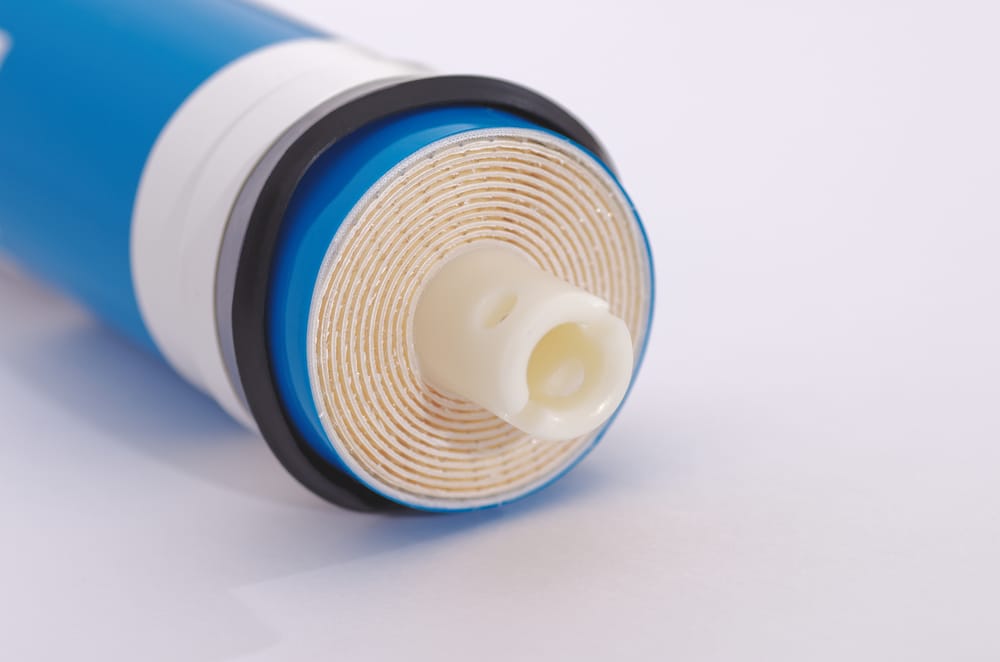
This is the main filter in an RO system. They remove 96% to 99% of all lingering contaminants in water, ranging from microorganisms to salts and metals. The membrane itself divides water into two primary streams. The water that goes through the membrane either gets used immediately or goes into a storage tank, depending on the setup.
The water that doesn’t go through the membrane is pushed to an outward line, where you can use it for other purposes or simply dispose of it. Membrane efficiency varies, so expect to pay more if you want a high-efficiency membrane. However, remember that efficiencies may be high enough that a more expensive membrane will also save money over time.
In other words, it’s usually worth getting the best membrane you can.
#8: Check Valve
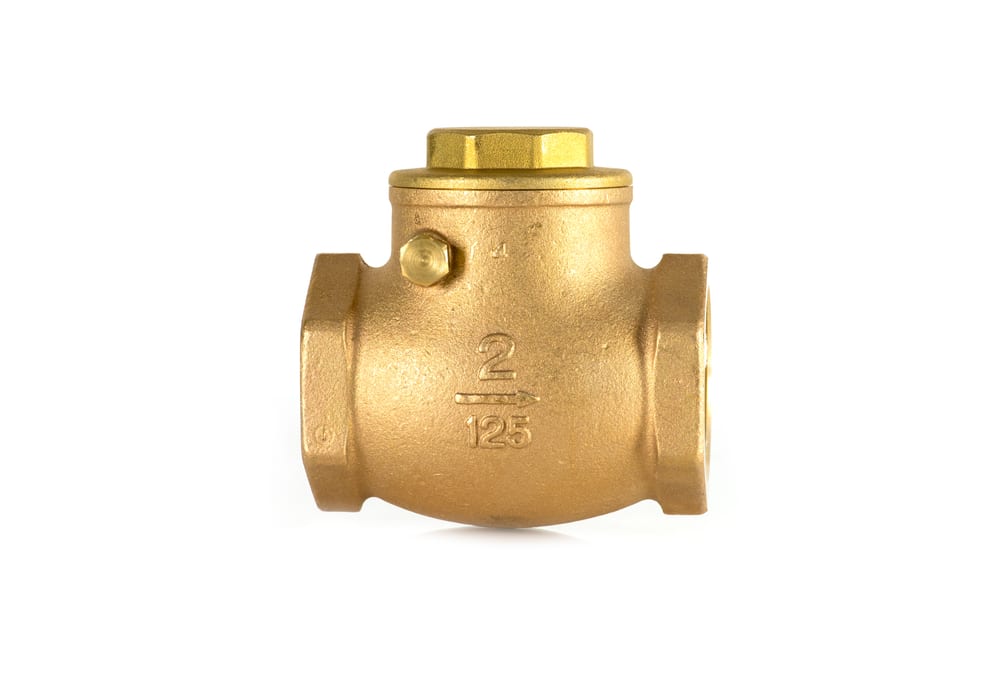
Often overlooked by buyers thanks to its simple nature, check valves help prevent the pressurized, filtered water from flowing backward and damaging the membrane when the ASO valve shuts off. This is a small but essential component of the system, and it usually goes immediately after the membrane to help ensure as much protection as possible.
In some cases, you can get additional protection by placing the storage tanks downhill from the membrane. If the water always flows away from the membrane, backward pressure isn’t nearly as big of a concern.
#9: Inline Filter
Water that reaches this point is extremely pure, although it’s still not 100% clean. Inline filters at this point usually have another activated carbon filter, helping remove any tastes, smells, or substances that may remain in the water. This is often a good time to help remove any gases that are in the water, as those will pass right through the membrane above.
#10: Remineralization Filter (optional)
This is more optional than most of the components in an RO system. Alkaline filters help increase the pH level by adding popular minerals and substances that may have been filtered out with other compounds earlier in the process.
Most of these filters last for a few thousand gallons at a time, so expect to replace them somewhat regularly, especially if you’re filtering your entire household’s water instead of just your kitchen water.
#11: Water Quality Monitor (optional)
Water quality monitors are another optional system, but they’re a great way to be sure your system is working. Inline water monitors usually measure things like the total dissolved solids in water when you check them, providing an accurate and up-to-date measure of quality.
Remember that remineralization filters will add total dissolved solids, so water quality monitors will display those additions and help you ensure that the water moving forward is at the level it should be.
#12: UV Disinfection System (Optional)
This isn’t necessary for most reverse osmosis systems. By the time your water passes through the inline and remineralization filters, chances are almost no bacteria or organic material remains, which makes adding a UV disinfection system somewhat unnecessary.
However, this can bring peace of mind for situations where reducing growth in bacteria is particularly important. Some people also install UV filters earlier in a reverse osmosis system, typically after the sediment filter but before the first carbon filter. This can reduce potential bacterial growth around those areas.
#13: Pressurized Storage Tank
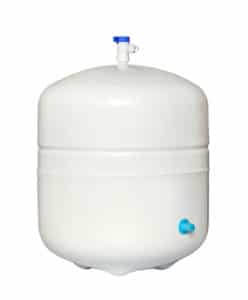
Most people don’t use the water that they filter through reverse osmosis right away. Some components have flow rates as low as half a gallon per minute, which is significantly slower than people need for almost any purpose. That’s where storage tanks come in.
Pressurized storage tanks help provide water that’s under pressure when you want to use it, giving you much faster water flow rates. You can put these tanks at a central location or put them immediately under areas where you want to use them, such as beneath faucets.
Selecting your storage tank is one of the essential parts of buying a reverse osmosis system because it determines how much water you can access at any time. If it’s too low, you won’t get enough water. If it’s too high, you’re wasting money filtering and storing water that you aren’t using.
The good news is that it’s relatively easy to add new storage tanks as you need them. For example, if you add someone to your household, you can add new storage tanks to compensate, and you probably won’t have to change any of the other parts of your system.
#14: Water Faucet
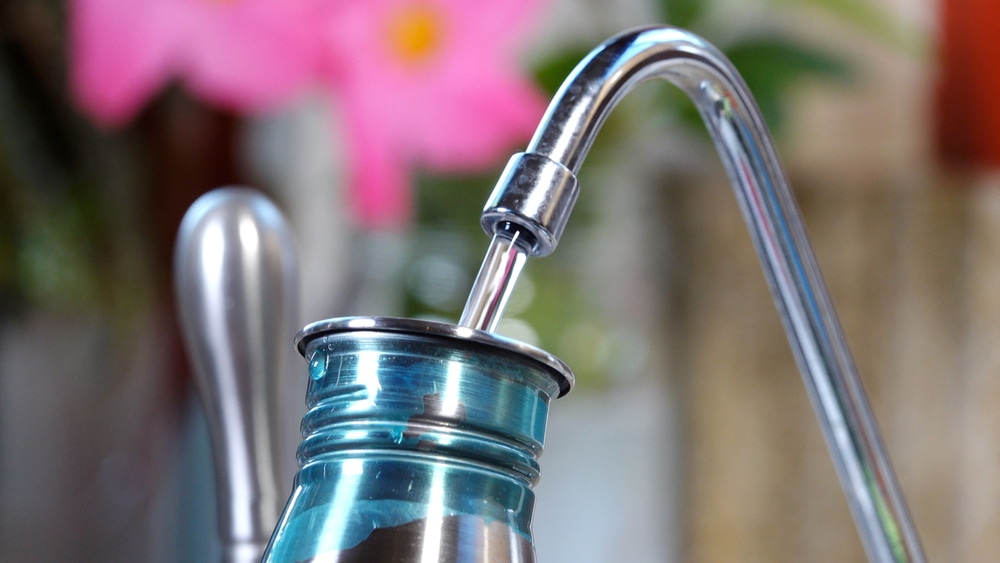
The last part of a reverse osmosis system is the water faucet. Most systems use a dispenser with no air gap in it, immediately dispensing purified water once you open the valve. Some better faucets also have drain lines to help protect your system if you get reverse suction for any reason.
Water faucets are not the only place you can dispense your purified water, but they are the most commonplace. Some people also use reverse osmosis water for showers and bathtubs, as well as ice makers in refrigerators. Most people do not use reverse osmosis for toilet water, though.
What Contaminants do Reverse Osmosis Systems Remove?
Properly installed reverse osmosis systems generally remove over 99% of dissolved salts, colloids, organic material, pyrogens, bacteria, and other particles from the water that passes through them. Most systems filter out anything with a molecular weight of 200 or more. For context, a typical water molecule has a molecular weight of 18.
Note that reverse osmosis systems do not remove 100% of all bacteria and viruses, and therefore they don’t qualify for creating genuinely “pure” water. This isn’t a huge issue in most regular households, but it can matter for some medical, commercial, or industrial applications.
Similarly, reverse osmosis systems are not suitable for removing certain gases, including CO2. These gases tend to have a low charge while in solutions and also have a low molecular weight, so semi-permeable membranes can’t remove them.
Related: Does Reverse Osmosis Remove Fluoride?
Reverse Osmosis vs. Water Softening
Water softeners are not the same thing as water purifiers.
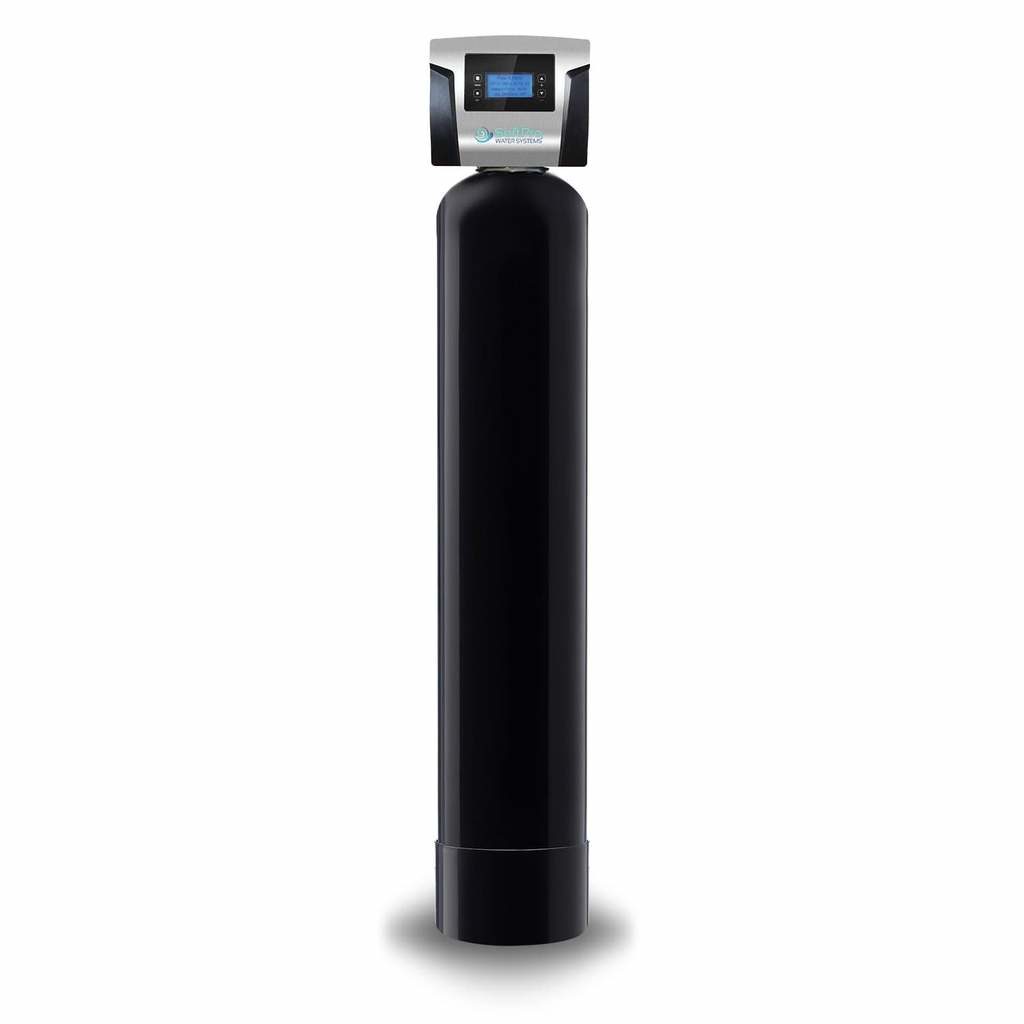
Hard water is water that has a lot of calcium and magnesium dissolved in it. This has various effects, but the most noticeable for many people is a feeling of film or residue left on the hands after washing them. Hard water also requires more soap to clean things.
Water softeners help exchange calcium and magnesium atoms for sodium and potassium, which interact better with most systems.
Notably, water softener systems usually go at the point of entry for water in a household, allowing them to affect water in the entire house. This is different from reverse osmosis systems, which usually focus on point-of-use areas like sinks.
One thing to keep in mind is that you can use both of these systems in one household. Reverse osmosis systems will remove the minerals that water softeners add, but removing the heavier, harder minerals before they reach the first filter helps reduce general wear and tear on the reverse osmosis system.
In other words, water softeners help extend the value of your investment, so they’re worth considering. However, as water softeners are not water purifiers, they are not a good substitute for a complete filtering system.
We talked extensively on this in our Reverse Osmosis vs Water Softener Guide.
Reverse Osmosis vs. Distilling
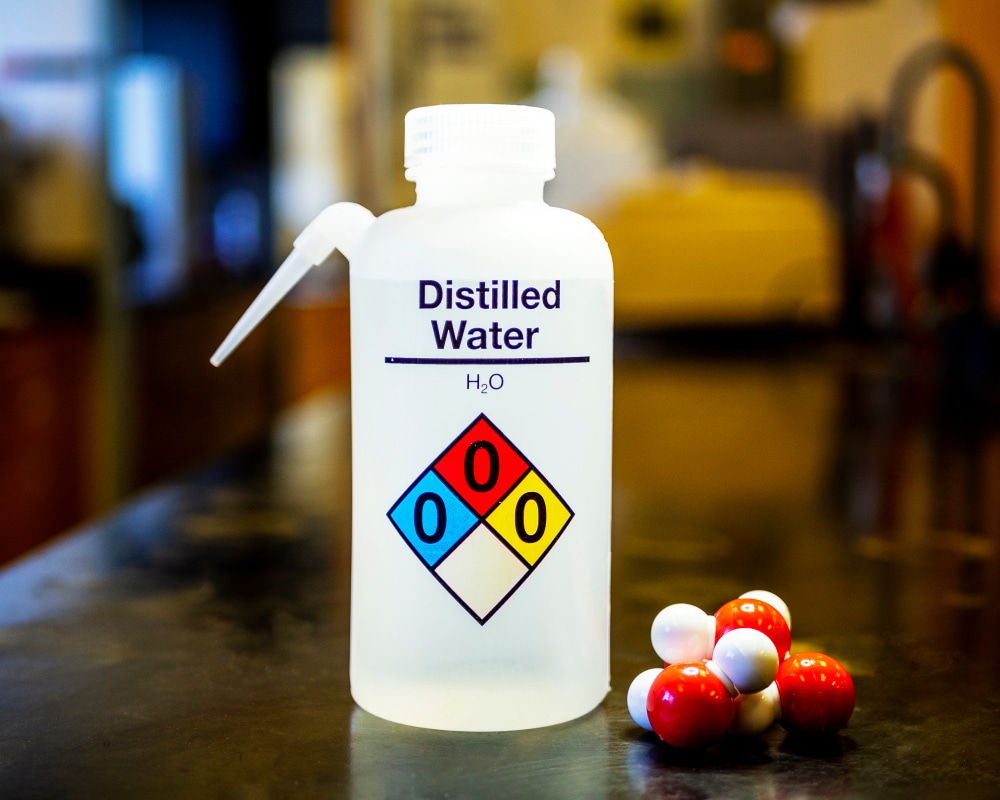
Distilling water is a time-consuming, energy-intensive process, but it’s also one of the most effective ways of getting genuinely pure water. In most cases, distilling water leaves it with only about one part per million of dissolved solids, which is lower than most reverse osmosis systems create.
Distilling is a good choice when you need water that’s as pure as possible. It’s especially valuable for scientific applications, particularly if you use other filtering layers to help remove any lingering chemicals.
However, distilling is also so slow and costly that it’s hard to use in ordinary homes. While some people use it for medical systems, distilled water isn’t practical for drinking or cooking. Reverse osmosis systems can provide water on-demand to any area of your house, making them far more viable as filtration systems.
Learn more in our Reverse Osmosis vs Distilled Water Guide.
Reverse Osmosis Maintenance Requirements
Reverse osmosis systems don’t require a lot of maintenance, but they do need some. The main form of regular maintenance for most systems is replacing worn-out filters with new ones. Filter lifespans vary, but most components will last 3, 6, or 12 months under regular use.
Most components are intentionally easy to replace, so you can do it yourself as long as you have new parts ready to install. However, you may need to drain tanks or shut off specific components before you can replace them. This means you’ll also need to wait a while for the system to filter more water after you maintain it.
There are a few things you can do to get creative here. For example, in some areas, you can install several filters on different lines that all lead back into one pipe. This can increase the amount of water you filter at once. It’s not necessary for all setups, but it is workable.
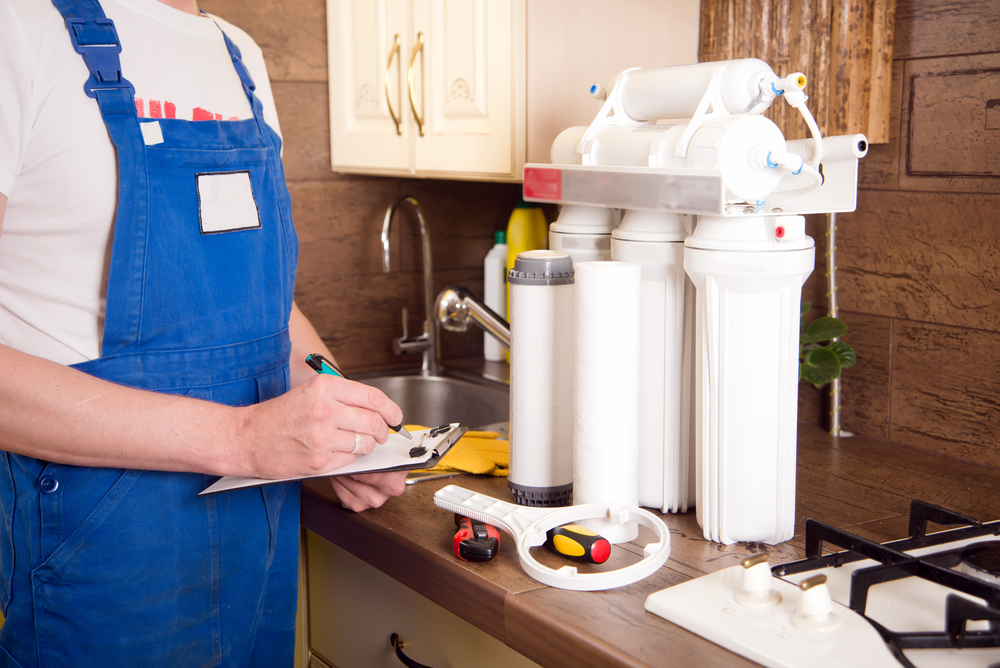
When and Where to use Reverse Osmosis Water Filter
Reverse osmosis water filters are a good choice for any household with lots of contaminants in its water. The Environmental Working Group nonprofit maintains a database of information about local water districts and detected contaminants, and you can look up your local water supply there.
Reverse osmosis systems also have different values depending on how much water you need. It doesn’t do much good to filter contaminants out of your drinking water if you absorb them through your skin during a shower, so these systems work best if you can connect them to any water you touch.
Conclusion
Now that you know more about how a reverse osmosis system works, it’s time to decide whether to add one to your household. Reverse osmosis systems are more than sufficient to purify water well enough for most household needs. The ability to add extra filters or storage tanks provides outstanding utility for adjusting to your individual water needs.

